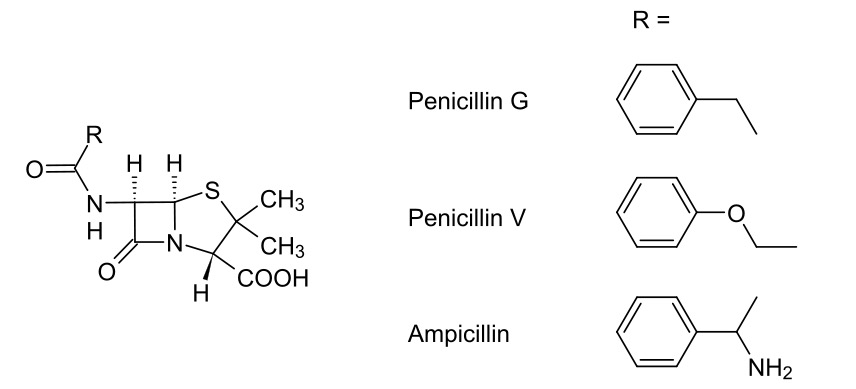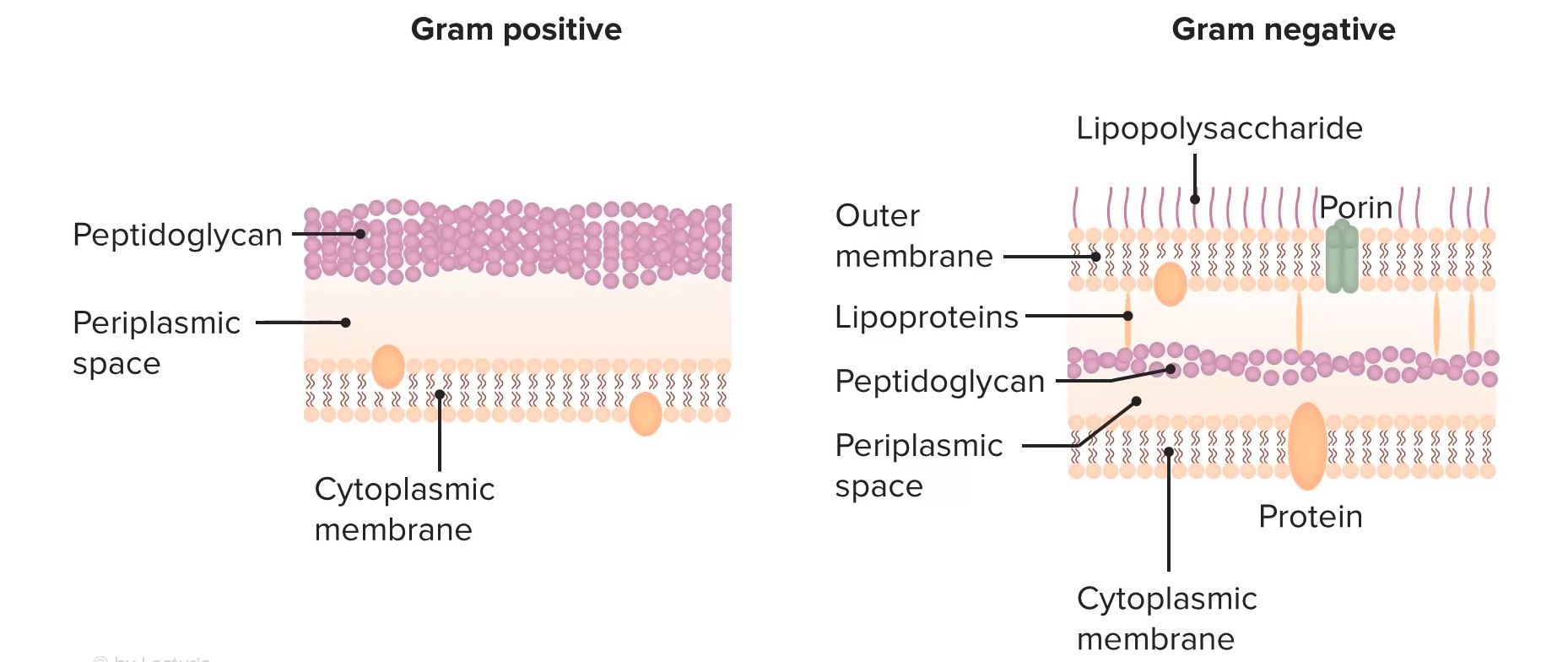Playlist
Show Playlist
Hide Playlist
Cephalosporins – Cell Wall Synthesis Inhibitors (Antibiotics)
-
Slides Cephalosporins Cell Wall Synthesis Inhibitors Antibiotics.pdf
-
Reference List Pharmacology.pdf
-
Download Lecture Overview
00:01 Next we have the cephalosporins. 00:03 The cephalosporins are divided into generations. 00:06 Let's start with the first generation cephalosporins. 00:10 The most commonly used is Cefazolin. 00:13 Cefazolin has excellent coverage against gram positive organisms. 00:17 And if you think about it, it's an excellent antibiotic to use in surgical infections. 00:22 Now, if you have a skin infection, Cefazolin is probably your go to drug. 00:28 However, cefazolin does not have much effectiveness against gram-negative bacteria. 00:33 So for example, if you had a urinary tract infection, cefazolin is not going to be very intelligent empiric antibiotic choice. 00:41 Okay, I had said before that the first generation cephalosporins had excellent gram-positive coverage, but not so great gram-negative coverage. 00:51 As we move down in the generations, you'll start to see that the higher generation medications have better and better coverage for gram-negative organisms. 01:00 Now, those gram-negative organisms can be seen in respiratory tract infections. 01:05 We often think of as a second-generation cephalosporins as being respiratory drugs. 01:10 Why is that? Because for upper respiratory infections have a lot of gram-positive organisms and some gram-negative organisms. 01:18 For example, cefuroxime works against gram-negative bacteria quite nicely, and it works very well against Haemophilus influenza. 01:26 So if we have a person who has either a strep infection or Haemophilus infection, but we don't know, will often use cefuroxime. 01:35 Now, the nice thing about cefuroxime and these drugs is that they also have a little bit of anaerobic activity. 01:43 Generally speaking, we don't see anaerobic activity much in the lung. 01:49 Now we move on to the third generation cephalosporins. 01:52 So what do you think based on my logic that these are going to cover? Well, you'd be right. 01:57 These drugs like cefotaxime, are very effective at gram-negative organisms. 02:03 Unfortunately, you make a trade off because they're less effective at gram-positive organisms. 02:08 They will often work against organisms that are resistant to many penicillins. 02:15 So sometimes we'll either use it as an agent that we know a person has had a penicillin before and didn't respond. 02:23 Now, we only use this particular type of cephalosporin and serious infections. 02:28 I like to say that these are intensive care unit drugs, but not really. 02:32 I would say that they're ward at drugs. 02:35 So we tend to use them on the medical floor when people have really bad infections. 02:40 Let's move on to the fourth generation cephalosporins. 02:44 This category involves a very complicated drugs Cefepime is a perfect example of that. 02:51 Now, these drugs are zwitterions. 02:54 What's a zwitterion? A zwitterion is an ion or a drug that has two different charges on the same molecule. 03:02 Normally, we think of molecules as either being positively charged or negatively charged, A zwitterion has a positive charge on one end and the negative charge on another. 03:11 Okay, let's move on. 03:13 So a fourth generation cephalosporin like cefapime is more resistant to beta lactamase producing organisms. 03:21 Enterobacter is a particularly difficult infection to treat. 03:26 We often see this in very sick patients who are in the intensive care unit or on the ward. 03:34 So, let's say a person comes in. 03:36 You suspect that they have a beta-lactamase based infection. 03:39 Cefepime is a really good choice in this particular type of patient. 03:44 Now we move on to fifth generation cephalosporins. 03:48 It includes drugs like ceftaroline. 03:50 Now, I want to make a mention that not everyone accepts the whole nomenclature behind fifth generation cephalosporins. 03:57 There are some people who just say that all fifth generations are unclassified. 04:02 I'll leave that debate alone for a moment. 04:04 Now take a look at this structure. It's a very complicated structure. 04:08 So you can see, that these fifth generation cephalosporins are larger, more complicated molecules. 04:15 Ceftaroline, has excellent MRSA coverage, and we will often use it in patients who are sick with MRSA. 04:23 This is another agent. 04:24 You can see it's a slightly simpler structure. 04:27 It has powerful antipseudomonas activity, and it also can work against VRE, which stands for Vancomycin-resistant Enterococcus. 04:37 Ceftolozane is another fifth generation cephalosporin. 04:41 We will often use this in intraabdominal infections that are complicated. 04:45 So intra abdominal infections tend to have a lot of gram-negative organisms. 04:50 They sometimes have gram-positive organisms. 04:53 And more importantly, they have anaerobic organisms. 04:58 And treating anaerobic organisms is notoriously difficult. 05:01 We have to resort to very complicated drugs. 05:04 This is an excellent choice for an abdominal infection. 05:08 Sometimes complicated urinary tract infections can be treated with this drug as well. 05:13 And when you think about it, urinary tract infections also tend to have a lot of gram-negative. 05:19 Sometimes they'll have anaerobic. 05:20 and sometimes they'll have Pseudomonas infections. 05:23 We will often combine it with tazobactam. 05:26 And remember that tazobactam is combined with other agents to like Piperacillin. 05:31 Finally we have the unclassified. 05:33 Now, maybe someday we'll call this the sixth generation. I don't know. 05:37 There's a whole host of them. 05:39 They haven't really been studied very much. 05:41 They're brand new. 05:43 And information will come out as they start to get more and more clinical usage.
About the Lecture
The lecture Cephalosporins – Cell Wall Synthesis Inhibitors (Antibiotics) by Pravin Shukle, MD is from the course Antimicrobial Pharmacology. It contains the following chapters:
- Cephalosporins
- Other Beta-Lactam Drugs
Included Quiz Questions
What types of organisms are targeted by 4th generation cephalosporins but not by 1st generation cephalosporins?
- Gram-negative bacteria
- Gram-positive bacteria
- Intracellular bacteria
- Bacterial infections of the brain and spinal cord
- Beta-lactamase-producing bacteria
Which cephalosporin has the best coverage for methicillin-resistant staphylococci (MRSA)?
- Ceftaroline (Teflaro)
- Cefotaxime (Claforan)
- Cefazolin (Ancef, Kefzol)
- Cefotetan (Cefotan)
- Ceftriaxone (Rocephin)
Customer reviews
5,0 of 5 stars
| 5 Stars |
|
2 |
| 4 Stars |
|
0 |
| 3 Stars |
|
0 |
| 2 Stars |
|
0 |
| 1 Star |
|
0 |
I loved the lecture so much! But sir, isn't there something called as fifth generation cephalosporins? And please please pleaaaase add more questions to each chapter. Only 3 questions per chapter is not enough. Please consider this sir.
1 customer review without text
1 user review without text





